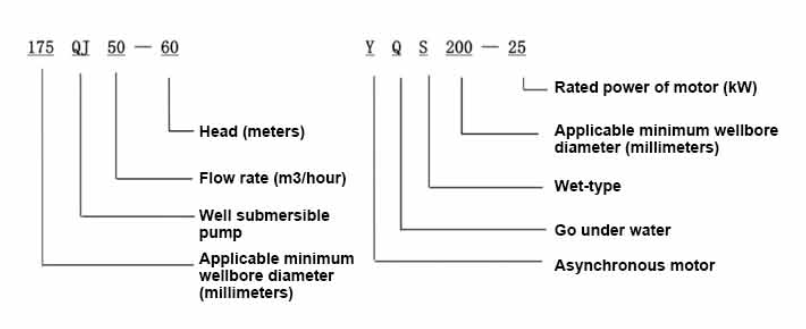feb . 15, 2025 01:08 Back to list
how to test a submersible well pump
Testing a submersible well pump isn't just a matter of plug-and-play. It requires a careful balance of technical knowledge and hands-on experience to ensure that the pump is functioning efficiently and meets the needs of its intended application. This article provides a comprehensive guide for testing a submersible well pump with an emphasis on reliability and the assurance of efficient operation.
Another critical factor is the head pressure, which is the height to which the pump can lift water. Use a pressure gauge to measure the pressure within the system. For an accurate reading, ensure the gauge is properly installed on the pump’s pressure port. The observed head pressure should match the specification range provided by the manufacturer. Deviations may be a result of impeller wear or system leaks, which should be promptly addressed. Thermal management is a subtle yet vital component of pump testing. Submersible pumps tend to overheat if not adequately submerged or if there is restricted flow. If your pump has a thermal overload protection feature, verify its operational status by inducing a load and checking if it activates after a prolonged operation. This will prevent overheating, which can damage internal components and reduce the lifespan of the pump. Monitoring the pump's electrical consumption provides another layer of insight into its operational efficiency. Utilizing an ammeter, check the current draw on each of the pump’s phases. An increased current draw can be a sign of an impending motor failure or other internal mechanical issues. Compare these values to the manufacturer's stated ranges and take corrective measures if discrepancies are found. Finally, documenting your findings is invaluable for ongoing maintenance and troubleshooting in the future. Maintain a log of test results, including flow rate, head pressure, electrical readings, and any anomalies or repairs conducted. This historical record not only aids in understanding the pump’s performance trends but also enhances reliability by ensuring timely interventions when anomalies arise. Testing a submersible well pump is not merely about the immediate assessment; it is a meticulous process aimed at ensuring continuous, trouble-free operation. By integrating these evaluative steps with the technical specifications, users not only exploit the pump's full potential but also instill confidence in its reliability and longevity. For stakeholders relying on these systems, whether in agriculture, industry, or residential setups, ensuring efficient well pump operation is paramount for sustained and efficient water supply.


Another critical factor is the head pressure, which is the height to which the pump can lift water. Use a pressure gauge to measure the pressure within the system. For an accurate reading, ensure the gauge is properly installed on the pump’s pressure port. The observed head pressure should match the specification range provided by the manufacturer. Deviations may be a result of impeller wear or system leaks, which should be promptly addressed. Thermal management is a subtle yet vital component of pump testing. Submersible pumps tend to overheat if not adequately submerged or if there is restricted flow. If your pump has a thermal overload protection feature, verify its operational status by inducing a load and checking if it activates after a prolonged operation. This will prevent overheating, which can damage internal components and reduce the lifespan of the pump. Monitoring the pump's electrical consumption provides another layer of insight into its operational efficiency. Utilizing an ammeter, check the current draw on each of the pump’s phases. An increased current draw can be a sign of an impending motor failure or other internal mechanical issues. Compare these values to the manufacturer's stated ranges and take corrective measures if discrepancies are found. Finally, documenting your findings is invaluable for ongoing maintenance and troubleshooting in the future. Maintain a log of test results, including flow rate, head pressure, electrical readings, and any anomalies or repairs conducted. This historical record not only aids in understanding the pump’s performance trends but also enhances reliability by ensuring timely interventions when anomalies arise. Testing a submersible well pump is not merely about the immediate assessment; it is a meticulous process aimed at ensuring continuous, trouble-free operation. By integrating these evaluative steps with the technical specifications, users not only exploit the pump's full potential but also instill confidence in its reliability and longevity. For stakeholders relying on these systems, whether in agriculture, industry, or residential setups, ensuring efficient well pump operation is paramount for sustained and efficient water supply.
Latest news
-
Water Pumps: Solutions for Every Need
NewsJul.30,2025
-
Submersible Well Pumps: Reliable Water Solutions
NewsJul.30,2025
-
Stainless Steel Water Pumps: Quality and Durability
NewsJul.30,2025
-
Powerful Water Pumps: Your Solution for Efficient Water Management
NewsJul.30,2025
-
Oil vs Water Filled Submersible Pumps: Which is Better?
NewsJul.30,2025
-
Deep Well Pumps: Power and Reliability
NewsJul.30,2025
-
 Water Pumps: Solutions for Every NeedWhen it comes to handling dirty water, the dirty water pump is a must-have.Detail
Water Pumps: Solutions for Every NeedWhen it comes to handling dirty water, the dirty water pump is a must-have.Detail -
 Submersible Well Pumps: Reliable Water SolutionsWhen it comes to ensuring a reliable water supply, submersible well pumps are a top choice.Detail
Submersible Well Pumps: Reliable Water SolutionsWhen it comes to ensuring a reliable water supply, submersible well pumps are a top choice.Detail -
 Stainless Steel Water Pumps: Quality and DurabilityWhen it comes to choosing a water pump, the stainless steel water pump price is a crucial factor.Detail
Stainless Steel Water Pumps: Quality and DurabilityWhen it comes to choosing a water pump, the stainless steel water pump price is a crucial factor.Detail
